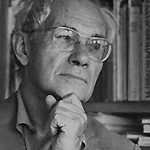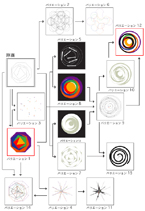Max Bill Poster Variation12
design Max Bill[1935-1938]
- [Price]
- Poster JPY3,500
with Light Frame JPY9,600
with Hyper Frame JPY11,100
with Glano Frame JPY16,700 - [Size]
- Poster W.500 H500mm
Light Frame W.510 H.510mm
Hyper Frame W.502 H.502mm
Glano Frame W.520 H.520mm - [Material]
- Vannouveau
Light Frame / Hyper Frame : Aluminum
Grano Frame : White Ash - [Brand]
- METROCS(made in Japan)
These are art pieces created around the themes of 'continuity', 'development' and 'invention' from an original picture by Max Bill. Certified by the Max Bill Foundation, these 2007 posters faithfully reproduce the original lithograph colors.
Fifteen Variations
on a Single Theme
This is the concrete art of Max Bill which was created during 1935-1938. The original work was published as a shape of booklet from a publishing company in Paris. Based on one theme (original drawing) as a nucleus of idea, he created the 15 variations along the 3 keywords 'continuity', 'development' and 'invention'. The original drawing is a spiral graphic of a line which consists of a regular triangle with one side becoming a part of perfect square, and equally developed from the square to regular pentagon to regular hexagon to regular heptagon then to regular octagon. And following the molding rules set by him as how to put dots or draw lines in specific order, he put arranges to each 15 variations.
Color Variation

-
Max Bill [ 1908 - 1994 ]
Born in Winterthur, Switzerland in 1908. After an apprenticeship between 1924 and 1927 in Zurich, Max Bill studied at Bauhaus under Wassily Kandinsky and Paul Klee. Initially, he worked mainly as a painter, however, after 1929 he became a sculptor, graphic designer, and architect, as well as an industrial designer. 'Fifteen variations on a single theme' (1935-1938) is one of the geometric and abstract works he created during this period. After this he dedicated himself to the Ulm School of Design (Hochschule fur Gestaltung), handing down the spirit of Bauhaus to future generations and later becoming the first principal of the school.











